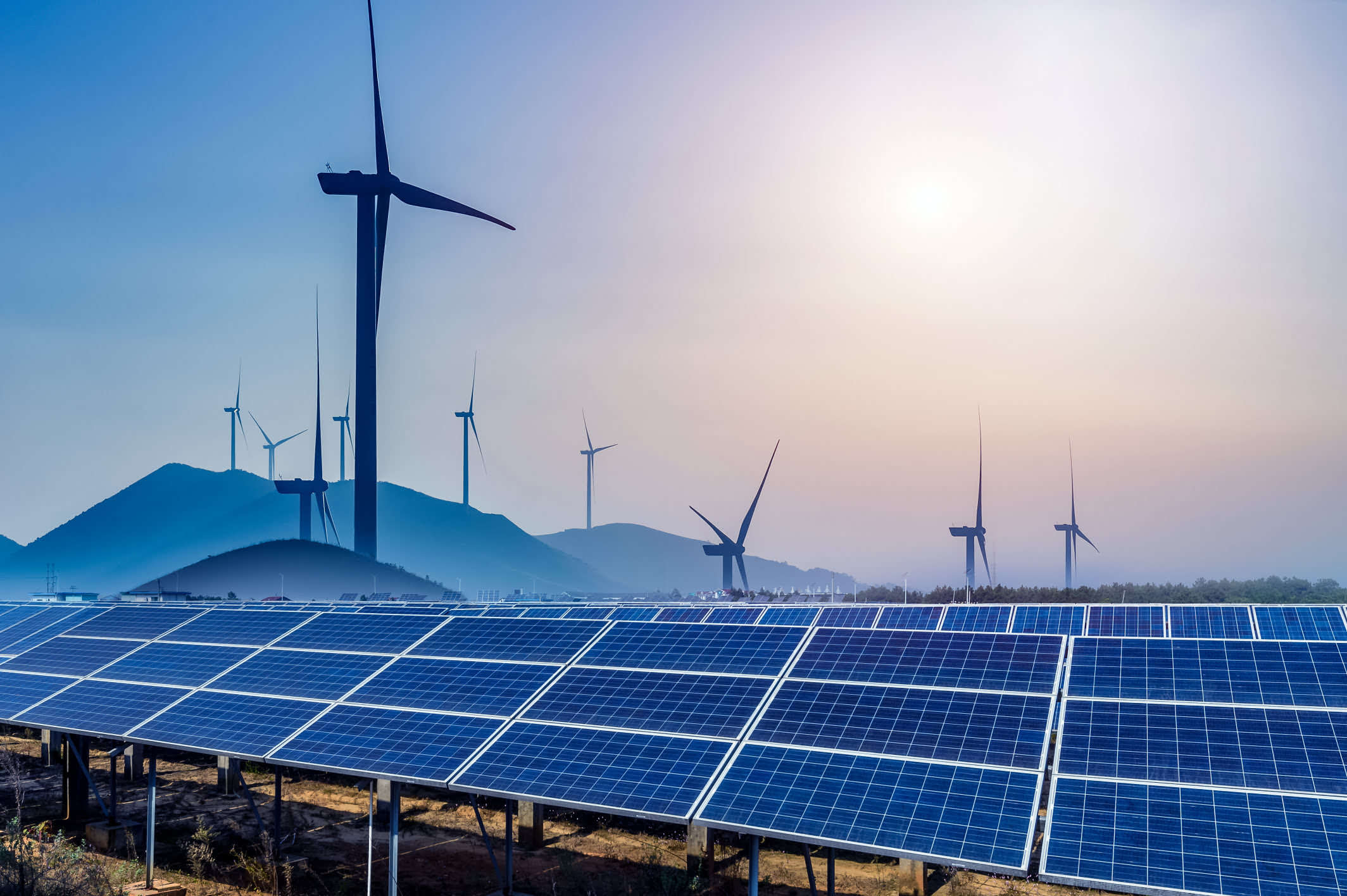Greentech Media (“GTM”) held its renewables financing briefing on March 14, 2019 in New York City. The briefing consisted of presentations from three Wood MacKenzie consultants and a discussion with Tim Short of Capital Dynamics and Jacob Susman of EDF Renewable Energy. Wood MacKenzie owns GTM.
Below are soundbites from the briefing. The soundbites are organized by topic, rather than chronologically and were prepared without the benefit of a transcript or recording. The soundbites were edited for clarity.
The topics covered include tax equity, future demand for renewables, the market for distributed generation solar, storage and natural gas and the future of utilities.
Market Dynamics of Tax Credits
“The tax credits are barriers to entry [for sponsors]. New entrants find it harder to work with tax equity. Tax equity require serious indemnities that exceed the capacity of a lot [of small] sponsors. So from a competition perspective, we like it.” Jacob Susman, EDF Renewable Energy
“A lot of people are planning safe harbor strategies. The market for 2022 projects is starting to reflect a reduced investment tax credit.” Tim Short, Capital Dynamics
[It is not clear to the editor why the market for 2022 would projects reflect a reduced investment tax credit. If a solar sponsor “starts construction” in 2019 using the (i) “five percent” safe harbor (e.g., purchase modules for a price equal to five percent of the project) approach or (ii) “significant physical work” (e.g., contracting for a custom step-up transformer that the physical manufacturing of starts in 2019), the project can qualify for a full 30 percent investment tax credit, so long as it is “placed in service” (i.e., operational) by the end of 2023. Nonetheless, such a reduced investment tax credit assumption in the market’s pricing should give well-advised sponsors an advantage in bidding on 2022 projects.]
Growth of Renewables
“We forecast that by 2040, that 20 percent of the power generation in the United States will come from offshore wind, that 30 percent of total solar power generation will be distributed generation, that 16 percent of households will have rooftop solar, and that there will be 150 GW of battery storage capacity.” Prajit Ghosh, Wood MacKenzie
Economics of Renewable Energy
“In ERCOT in 2018, solar projects got a 25 percent premium for each solar KWH relative to the market. In 2040, we project solar will be sold at a three percent discount per KWH to the market.” Prajit Ghosh, Wood MacKenzie
[This projected discount is due to the fact that the peak demand electricity is in the late afternoon to early evening, and that is when solar radiation (and accordingly power electricity production) is declining.]
“In ERCOT in 2018, each KWH of wind sells at a 27 percent discount to market. We project in 2040 that wind in ERCOT will sell at only a 12 percent discount to market. This is due to more solar projects being built and our projection that the price of electricity on average will rise in ERCOT.” Prajit Ghosh, Wood MacKenzie
[Wind sells at a discount now in ERCOT as when there is a strong wind all of the wind projects in ERCOT start to produce at high levels and create a glut of electricity. (i.e., supply)]
“The costs of all [energy generation] technologies are converging to compete.” Matt DaPrato, Wood MacKenzie
“Energy transition is being driven by technology and sustainability, and the transition is being made possible by the cost of renewables.” Prajit Ghosh, Wood MacKenzie
“In PJM, gas projects are disappearing from the pipeline [(i.e., the interconnection queue)] and are being replaced by solar, wind, storage and offshore wind.”
“Depending on the country, electricity production from renewables is increasing by 5 to 15 percent a year. That is more than the growth of demand for electricity.”
“The interconnection queue in ERCOT in 2016 shifted almost completely to renewables.” Prajit Ghosh, Wood MacKenzie
Carbon Policy
“Carbon pricing is inevitable. It will happen in the next 20 years.” Prajit Ghosh, Woo MacKenzie
“One hundred twenty companies in the United States are including carbon pricing in their investment decisions.” Prajit Ghosh, Wood MacKenzie
“Carbon pricing should be included in due diligence efforts.” Prajit Ghosh, Wood MacKenzie
“There will be renewable portfolio standard (“RPS”) mandates that get more aggressive. RPS mandates are a proxy for carbon policy. Prajit Ghosh, Wood MacKenzie
“For California to meet its goals, it must electrify transport and de-carbonize power.” Prajit Ghosh, Wood MacKenzie
RPS State Policies
“Power policy [in the United States] is decentralized, so it is important to not just focus on federal policy.” Matt DaPrato, Wood MacKenzie
“To meet California’s goals, it must electrify transport and decarbonize power.” Prajit Ghosh, Wood MacKenzie
“Ten states with Democratic governors and legislatures have proposed 100 percent renewables targets. If [all of those states enact the targets], it is like 2.5 more ‘Californias’ [(i.e., a large state committed to 100 percent renewables)]. Then Wisconsin, Massachusetts and Minnesota’s are ‘split’ party states and are talking about 100 percent renewables targets; that’s like 75 percent of another ‘California.’” Matt DaPrato, Wood MacKenzie
“Arizona and Florida are Republican controlled states, and they have proposed 100 percent renewables targets.” Matt DaPrato, Wood MacKenzie
Storage and Smart Grid
“In 2012 in CAISO, the conventional wisdom was that gas peakers were need to be back-stop renewables [due to intermittency of production], but in the pipeline [(i.e., the interconnection queue)] storage has replaced gas peakers in CAISO.” Prajit Ghosh, Wood MacKenzie
There will be regulatory changes in California that place a value on flexibility [(i.e., storage)]. Prajit Ghosh, Wood MacKenzie
“Battery storage found its sweet spot in the PJM market.” Elta Kolo, Wood MacKenzie
“The European energy majors are on a shopping spree across” the smart grid market. Elta Kolo, Wood MacKenzie
“Utilities are looking to tap into Alexa and Nest” to harvest data to leverage smart grid technology. Elta Kolo, Wood MacKenzie
Modeling Project Economics
“Too much value [in bid pricing for projects] is coming from the residual side.” Prajit Ghosh, Wood MacKenzie
[This is a reference to investors placing a high value on the project for the period after the power purchase agreement (“PPA”) or other contracting arrangement is over; however, such “residual value” is dependent on future power prices that are difficult to predict. There are reports that during the contract term some investors are only recovering their investment, while any profit is dependent on the residual value.]
“The market is very long development assets and very short quality offtake.” Tim Short, Capital Dynamics
“Expecting technology change has to be a ‘baseline’ risk [in your analysis] now; it is not just a ‘downside’ risk.” Prajit Ghosh, Wood MacKenzie
“The more solar plants you build the less value you get for it.” Prajit Ghosh, Wood MacKenzie
“It is important to understand not what the cost of electricity projection is in a model, but what are the risks around that cost projection.” Prajit Ghosh, Wood MacKenzie
“We don’t get too complex with modeling future potential positive policy changes. We spend more effort to model negative future potential policy changes.” Tim Short, Capital Dynamics
“We’ve got some scars from hedged wind farms in Texas, and it is really not pretty.” Tim Short, Capital Dynamics
“In a down cycle, a lot of the big players will pull in their sails a bit in terms of development capital, and that may create opportunities for small developers. The chance is not zero that some small development shops will win the day by being more nimble.” Jacob Susman, EDF Renewable Energy
Power Purchase Agreements
“PPAs are 20-year agreements. There can be a lot of business cycles over 20 years.” Tim Short, Capital Dynamics
“In 2005, the holy grail was a 20-year busbar utility PPA. Now, the typical term is less than 20 years, and the offtaker may not be a utility. Now, maybe it is not the holy grail to have fully contracted project. We’ve looked at some PPAs and decided to have a merchant project.” Jacob Susman, EDF Renewable Energy
“Behind the meter offtake arrangements [with corporate customers] have risks [for project owners]. The project owner typically ends up with a messy [financial] credit situation as corporates won’t give you a parent guarantee. As a project owner, you have to make sure the project can reach the grid as a ‘qualified facility’ because the project could lose its corporate offtaker.” Tim Short, Capital Dynamics
[Utilities are required to purchase power from “qualified facilities” at the utility’s “avoided cost.” So qualified utilities are assured they can sell power, even without a PPA.]
“A sponsor’s all-in return will have a 50 to 100 basis point premium for a distributed generation asset due to the risks of net metering.” Jacob Susman, EDF Renewable Energy
“Gas plant offtake contracts are five to seven years. We’re going to see renewables head in that direction. Jacob Susman, EDF Renewable Energy
“The price of ‘take or pay’ PPAs is going down but storage helps.” Jacob Susman, EDF Renewable Energy
Economics of Electric Utilities
“You better hope your portfolio of PPA offtakers is very diversified [(i.e., not all utilities)] because these is going to be a lot of disruption for the utilities in the next 20 years.” Tim Short, Capital Dynamics
“We see a future of a virtual utility with distributed generation, storage and electric vehicles.” Jacob Susman, EDF Renewable Energy
“I don’t see utilities baking into their culture the mindset that would allow them to be successful in distributed generation.” Jacob Susman, EDF Renewable Energy
“If utilities cannot provide corporates with renewables, the corporates will turn to virtual PPAs with independent developers.” Jacob Susman, EDF Renewable Energy
Economics of Natural Gas
“In the next five years, liquified natural gas (LNG) will become the biggest demand for gas, supplanting electricity generation as the biggest demand for gas.” Prajit Ghosh, Wood MacKenzie
“There is not much upside to gas pricing in the next 15 years for Henry Hub.” Prajit Ghosh, Wood MacKenzie



